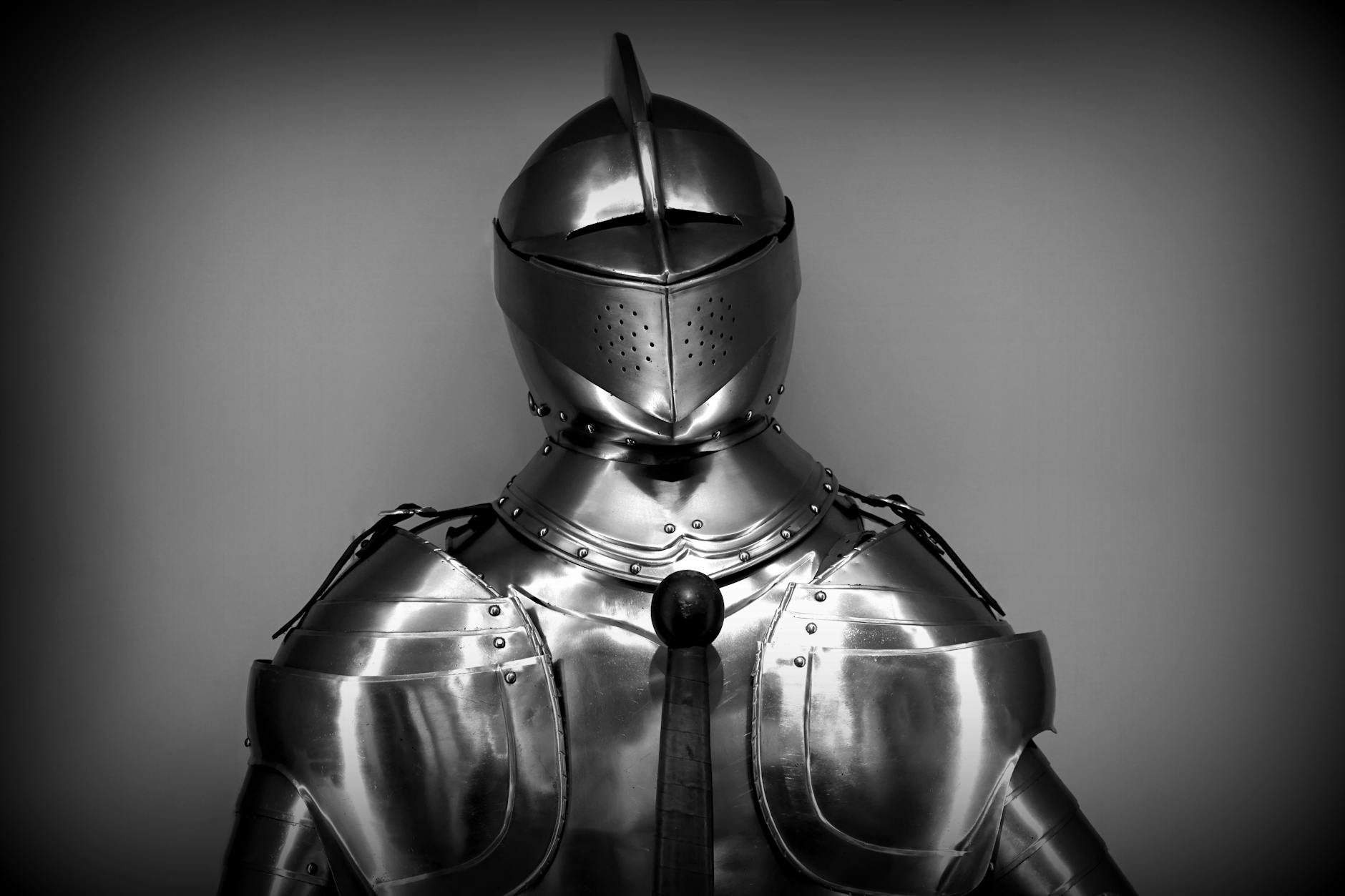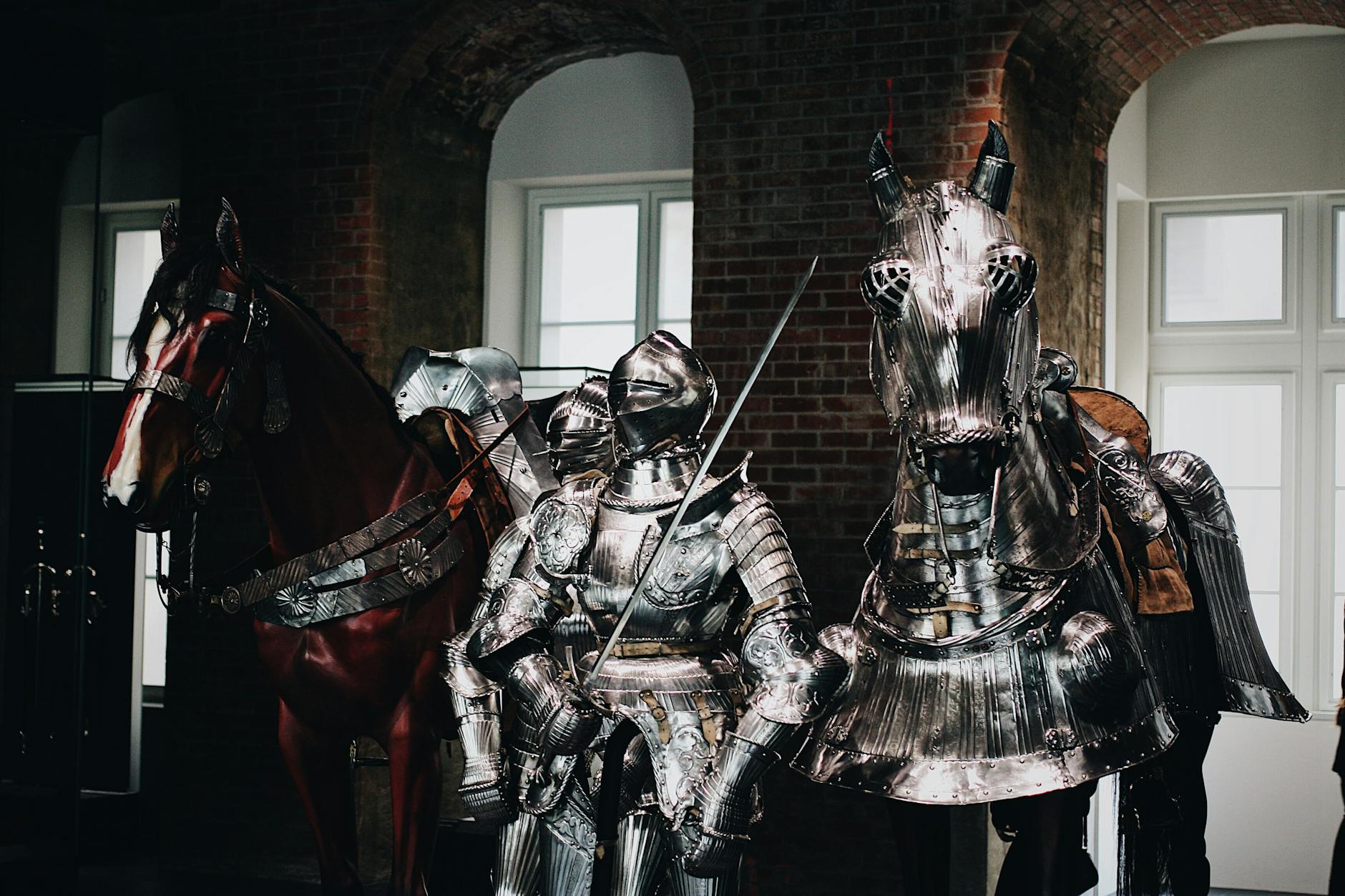The enduring echo of the warrior monk
Picture the image: a knight clad in a stark white mantle, a bold red cross emblazoned over his heart. He is a figure of piety and power, a warrior and a monk, a guardian of pilgrims and a master of finance. This is the enduring image of the Knights Templar. Though their official order was brutally disbanded over 700 years ago, the Poor Fellow-Soldiers of Christ and of the Temple of Solomon left an indelible mark on the world. Their story did not end with the smoke and flames of Jacques de Molay’s pyre in 1314; it simply transformed.

The legacy of the Knights Templar is not just a relic of medieval history confined to dusty books. It is a living, breathing presence woven into the very fabric of our modern society. It echoes in our financial systems, inspires fraternal organizations, captivates us in blockbuster movies, and is honored in the meticulous stitch-work of historical reenactors. Here at Knight Templar Uniform Blogs, where we unveil the legend in every stitch, we often focus on the attire itself. But to truly understand the power of that uniform, we must explore the vast and surprising legacy it represents.
The first bankers: How Templar finance shaped our modern economy
While their martial prowess is legendary, one of the Templars’ most significant and lasting contributions was in the world of finance. To fund their operations and protect the wealth of pilgrims traveling to the Holy Land, the Order developed a sophisticated and groundbreaking banking network. A pilgrim in London could deposit his gold at the London Temple, receive a coded letter of credit, and travel unarmed across Europe. Upon arriving in Jerusalem, he could present the letter at the local preceptory and withdraw an equivalent sum, minus a small fee.

Does this sound familiar? It should. This system was the direct forerunner of modern banking. It introduced concepts that we take for granted today:
- International transfers: The ability to move wealth across borders without physically transporting it was revolutionary. It laid the groundwork for the global financial network we rely on today.
- Checks and credit: The Templar letter of credit was, in essence, the world’s first traveler’s check. It was a promise to pay, backed by the full faith and immense wealth of the Order.
- Secure banking: Templar preceptories were fortified castles, effectively serving as the most secure vaults of their time. They became the trusted bankers for European kings and nobles.
The efficiency and trustworthiness of this system made the Templars incredibly wealthy and powerful, which ultimately contributed to their downfall. Yet, the principles they established—of credit, secure deposit, and international networks—became the cornerstones of European banking and continue to power our global economy today. Every time you use a credit card or wire money overseas, you are using a system whose conceptual roots can be traced back to these warrior monks.
The symbol that never died: The cross and mantle in modern iconography
A brand is only as strong as its logo, and the Knights Templar had one of the most powerful and recognizable brands in history. Their visual identity was simple, bold, and laden with meaning. This symbolism has proven so potent that it has been adopted, adapted, and reinterpreted for centuries.
The power of the red cross

The most iconic element of the Templar uniform is the red cross (croix pattée) on a white field. White represented the purity and chastity of the monk, while the red cross symbolized their willingness to become martyrs for their faith. This stark, high-contrast design was not just for show; it was a clear identifier on the chaotic medieval battlefield. Today, this potent combination of color and shape continues to convey ideas of charity, aid, and trusted service. While the International Red Cross has no direct historical lineage to the Templars, the visual and symbolic resonance is undeniable. The cross as a symbol of aid and protection owes a significant debt to the image first popularized by the Templars and other crusading orders.
The banner of duality: The Beauceant
The Templar war banner, the Beauceant, was a stark black and white flag. The black section symbolized the earthly, sinful life they had left behind, while the white section represented the pure, spiritual life they had embraced in the Order. It was a banner of duality, signifying that they were fierce to their enemies but kind and fair to their allies. This concept of duality—the warrior and the monk, the sinner and the saint—is central to the Templar mystique. It is a powerful theme that continues to fascinate modern audiences, appearing in stories and organizational philosophies that explore the complex nature of duty and morality.
Keepers of secrets: The Templar influence on fraternal orders
When the Knights Templar were officially suppressed in 1314, a powerful legend was born: that the order did not truly die, but instead went underground, preserving its secrets and traditions for a worthy future generation. This narrative, whether historically accurate or not, provided fertile ground for the growth of numerous fraternal and chivalric organizations.
The most famous of these is Freemasonry. Several Masonic bodies, particularly within the York Rite, are directly inspired by Templar lore. The highest degree of the York Rite is the Order of the Knights Templar, where members don regalia clearly inspired by historical Templar uniforms and participate in rituals that draw upon Templar history and ideals. These modern Masonic Templars are not claiming a direct, unbroken bloodline to the medieval order. Instead, they seek to carry forward the Templar ideals of faith, charity, brotherhood, and the defense of the innocent. They adopt the symbolism and the legend as a framework for their own moral and philanthropic missions.
Beyond the Masons, numerous other self-styled chivalric orders, both secular and religious, have adopted the Templar name and iconography. They see in the Templars a model of disciplined, selfless service and a commitment to a higher cause, ideals that resonate deeply in a complex modern world.
From holy warrior to Hollywood hero: The Templars in popular culture
For many people today, the first encounter with the Knights Templar isn’t in a history book, but on a screen. The Templars have become enduring archetypes in popular culture, their recognizable uniform and mysterious history making them perfect characters for tales of adventure, conspiracy, and ancient secrets.
Think of their role in films like Indiana Jones and the Last Crusade, where a Templar knight guards the Holy Grail for centuries, embodying eternal duty. Consider the worldwide phenomenon of Dan Brown’s novel The Da Vinci Code and its film adaptation, which placed the Templars at the center of a vast conspiracy to protect a secret bloodline. In the world of video games, the Assassin’s Creed series has famously cast the Templar Order as the primary antagonists for much of its run, portraying them as a powerful, ancient organization seeking to control the world.
While these portrayals are heavily fictionalized, they serve a crucial function in keeping the Templar legend alive. They tap into the core elements of the Templar mystique: their wealth, their secrecy, their military discipline, and their sudden, dramatic downfall. The white surcoat and red cross have become a visual shorthand for an ancient, powerful, and mysterious force, ensuring that new generations continue to be fascinated by the legend.
The modern templar: Reenactment and revival
Finally, the Templar legacy lives on in the most direct way possible: through people who actively seek to embody it. Historical reenactment groups around the world dedicate themselves to recreating the life of a Templar knight with painstaking accuracy. They study historical texts to perfect the cut of their mantles, the construction of their chainmail, and the techniques of their swordplay. For them, the uniform is not a costume but a piece of living history, a way to connect with the past and honor the discipline and ideals of the original order.
Alongside reenactors are the modern Neo-Templar organizations. These are typically Christian, charitable, and chivalric groups that adopt the Templar name and structure to pursue philanthropic goals. The most prominent of these is the SMOTJ (Sovereign Military Order of the Temple of Jerusalem), an ecumenical Christian organization dedicated to charitable works, disaster relief, and preserving historic sites in the Holy Land. These groups don ceremonial regalia inspired by the original Templar uniform and commit themselves to a modern-day interpretation of the Templar mission.
Conclusion: A legacy woven into our world
The Knights Templar were disbanded centuries ago, but they never truly vanished. Their spirit of innovation echoes in our financial systems. Their powerful symbols convey meaning on a global scale. Their ideals of brotherhood and service inspire modern fraternal orders. And their legendary story captivates us in books, films, and games.
From the banking systems that power our world to the entertainment that fills our evenings, the threads of the Templar legacy are woven throughout our society. They are a testament to how an organization, through a combination of genuine innovation, powerful branding, and an unforgettable story, can achieve a form of immortality. The white mantle and red cross are more than just historical artifacts; they are symbols of a legacy that continues to unfold, a legend that is still being written in every stitch and every story told.







